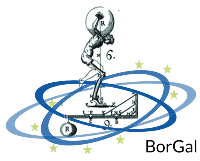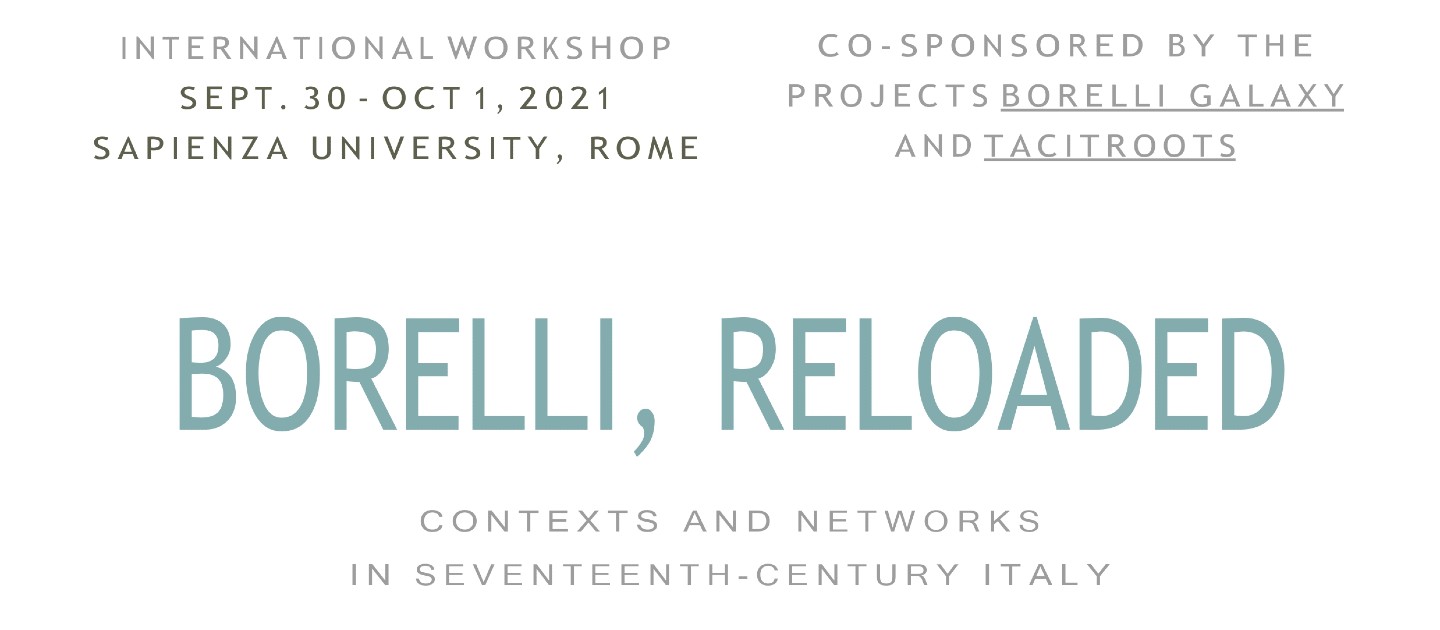The Italian physiologist, physicist, and mathematician Giovanni Alfonso Borelli (Neaples 1608 – Rome 1679) is a leading figure among the second generation of Galileo Galilei’s disciples. The natural philosophers who used to be named as ‘galileans’ (like Evangelista Torricelli, Vincenzo Viviani, Francesco Redi and others) did not pursue the same research program; some of them focused on mathematics and mechanics, other took a mere experimental approach to naturalistic investigation. Borelli was the only one to cross disciplinary boundaries and to adopt Galileo’s methodology – that is the experimental practice along with a mechanistic and geometrical epistemic model – to the different branches of scientific research. Even more important, like Galileo did, his work combined experimental practice and theoretical concerns, an attitude that became unusual in Catholic countries after Galileo’s condemnation (1633), even within ‘Galileo’s school’, to avoid censorship. Last but not least, Borelli’s case offers a unique insight into the impact of science on society in Early modern European Catholic environment. Where Galileo’s struggle for Copernicanism had been a direct and exclusive confrontation with the Church’s hierarchies, Borelli’s intellectual attitude exerted even an influence on the society, as it contributed to address groups of auroral ‘public opinion’ against the egemonic centers of conservative power, cultural as well as political.
Borelli’s life and career are emblematic of the kind of employment opportunities which Early modern Italy offered to
a mathematician. He earned a living by teaching mathematics at the local public Universities (Messina; Pisa) or benefitted from the patronage of aristocrats (Tuscany, Naples) and religious congregations (Rome). As a public lecturer, he shaped the academic geography of ‘modern’ science all over Italy: in the ’60 he promoted systematic campaigns favoring the establishment of the new philosophy in the University syllabus; in the ‘70 he trained the young generation of qualified students and researchers (such as Michelangelo Fardella, Domenico Quartaroni, Donato Rossetti) who by the turn of the century introduced the new methodology in their academic teaching. Pisa, where Borelli taught ‘à la galileista e fisico-matematicamente’, is only the most renown case.
Much against mainstream scholarship, Borelli’s case proofs that ‘Galileo’s legacy’ was not only a Tuscan heritage, and the 17th century Italian scientific ‘res publica literaria’ was a complex and intertwined community. He played a leading role also in the scientific academies in every place he lived in. During the decade that he spent in Tuscany, he was one of the mainstays of the scientific-experimental programs patronized by Prince Leopold de’ Medici in the Accademia del Cimento (1657-1667), where several natural phenomena were experimentally tested out, according to Galileo’s teachings. Borelli brought his rich intellectual agenda to the Academy and took part in nearly all the experiments performed there – on sound propagation, air pressure, resistance of materials, hydraulics -, as well as in the astronomical observation campaigns launched by the academicians. He leaded the internal disputes against the Aristotelians on behalf of the ‘neoteroi’, but he strongly opposed also the neutral epistemological strategy imposed by the Grand Duke to the Academicians in order to avoid Inquisitorial censorship.
The same intellectual approach informs his entire work. In his view, harmony and homogeneity are in all the natural phenomena – from planets to microscopic particles – and are expressed in mechanical terms. Against the humoralistic and aristotelian explanations, he supported corpuscolar theories and chemical principles (even if not alchemical nor Paracelsian). Based on these assumptions, he explained both the Sicilian epidemy of typhoid fevers of 1647-48 (Lezioni sulle cagioni delle febbri maligne, 1640), and the 1669 eruption of the Mount Etna (Historia et metereologia incendii Aetnei, Messina 1670). In his view, rapid and minute oscillations of the matter – ‘particulae’ – determine the behaviours of impulsive forces (De vi percussionis, 1667), gravitation (De motionibus naturalibus a gravitate pendentibus, 1670), pneumathical phenomena, as well as the planetary motions of the solar system (Theoricae Mediceorum planetarum ex causis physicis deductae (Forence, 1666). The impact of his work on the European scientific community can be hardly under-estimated. In Alexandre Koyré by now classical study on ‘celestial mechanics’ of 1961, Borelli already deserved a place between Kepler and Newton for his `imperfect but decisive’ unification of terrestrial and celestial physics. He strongly contributed to the birth of the science of geology, well before the 18th century. Above all, as the father of biomechanics, his work is a true world heritage. In his major work – De motu animalium (Rome, 1680-81) – he constructed a science of the living body ‘more geometrico demonstrata’, where both human anatomy and physiology were explained in terms of geometry, statics and dynamics, adopting a model of animal based on a corpuscular theory of matter, and as such open even to iatrochemistry. The number of citations of his name in professional medical journals is truly surprising and it is not coincidence the highest honor bestowed by the American Society of Biomechanics is the ‘Borelli Award’.
Borelli exerted also a deep influence on the ‘public sphere’, partaking in the cultural policy implemented by the learned institutions he used to attend. Between 1639 and 1656, for instance, he was a member of the Accademia della Fucina in Messina, sponsored by the city self-governing body (Senato) to culturally legitimize Messina’s autonomist tradition against Palermo, as the capital of the Spanish Viceroyalty. The Fucina was suppressed by the Spanish government in 1678, after the city’s rebellion to the viceroy, as a breeding-ground of political dissent. Borelli’s role in the revolt has not been entirely clarified; but it certainly caused his ban from the city (1672). Once exiled in Rome, his scientifical and ‘(pre)ideological’ credo was again the main reference point pro or con for all the public academies and informal circles of natural philosophy and medicine and it became a divide between the ‘left wing’ of neoterics (like the Congresso medico) and the conservative party allied with the pure sperimentalists (like the Accademia Fisico-Matematica).


